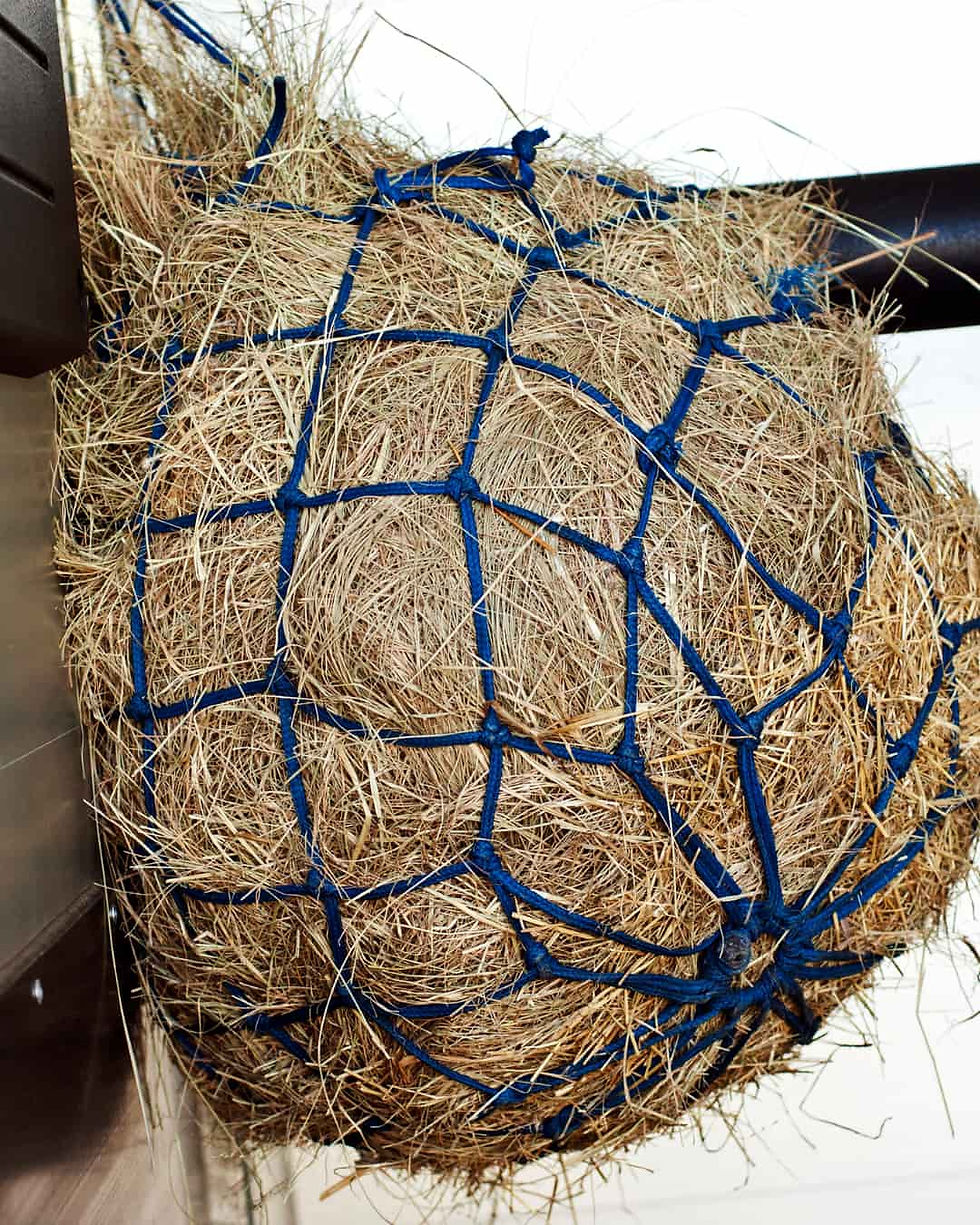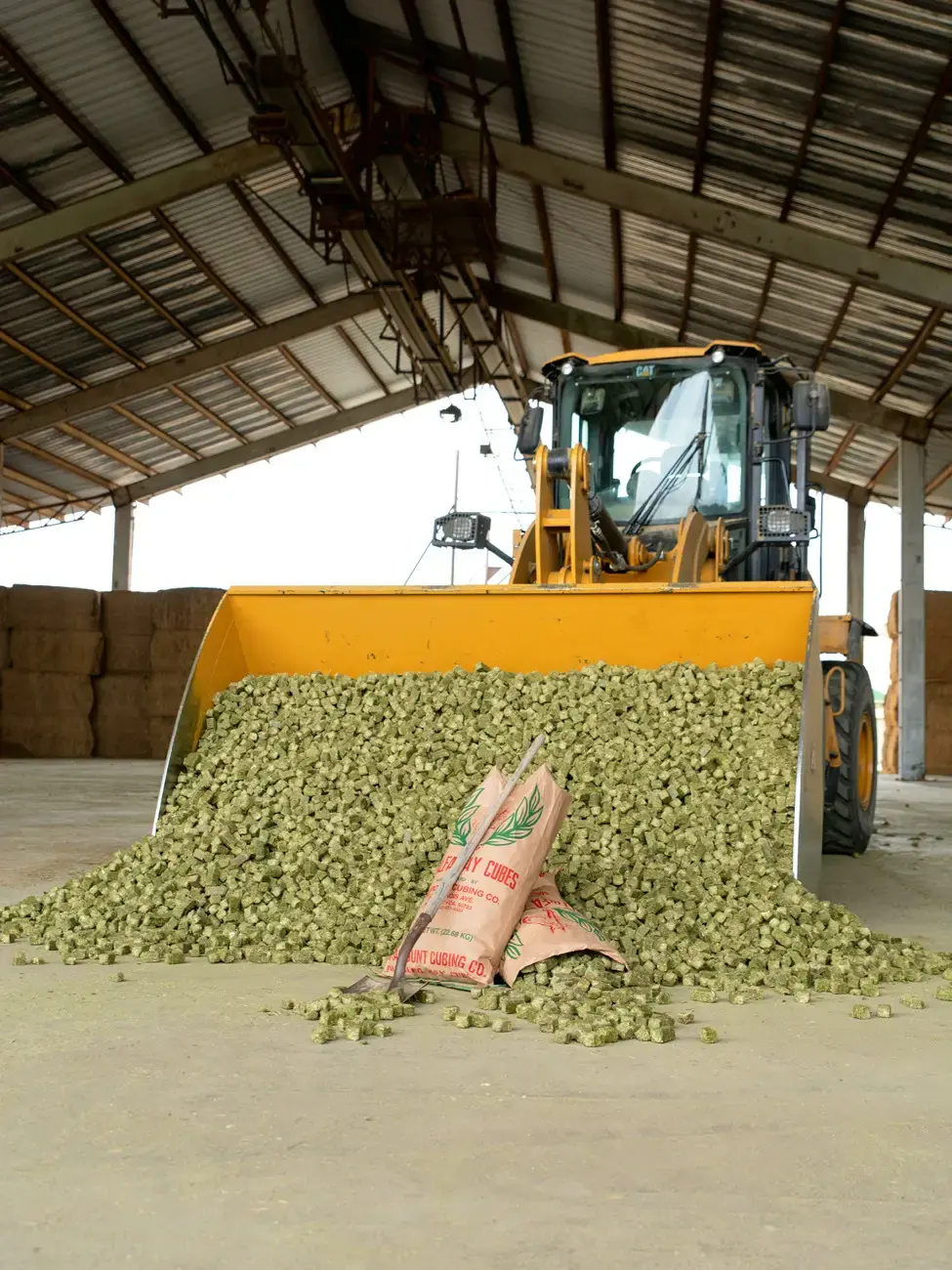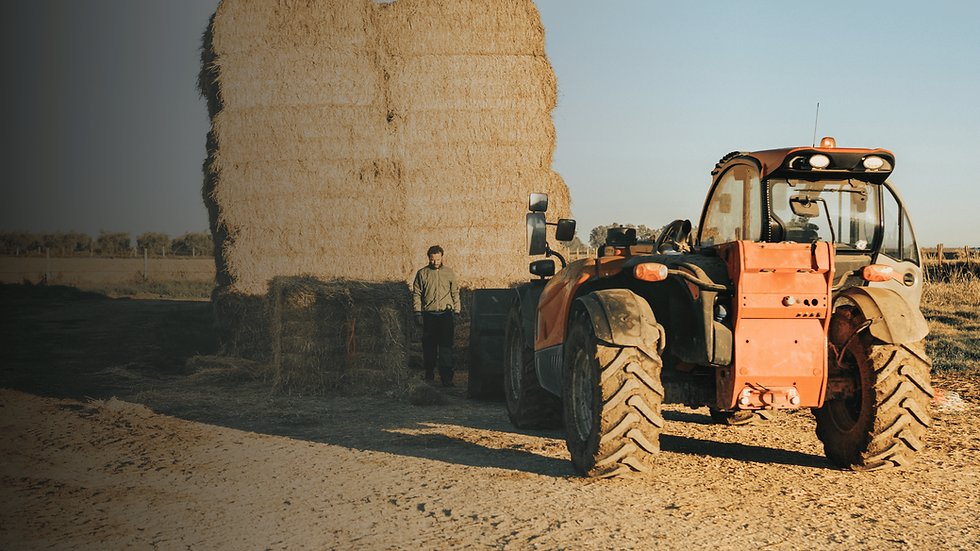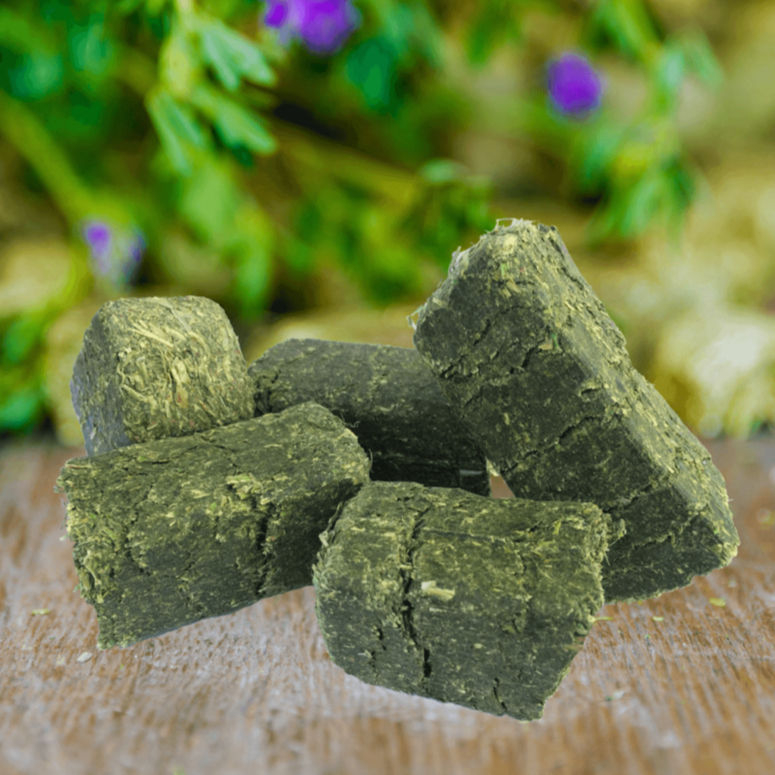Farmers’ Guide to Finding Bales of Hay for Sale in Rural Utah
- McKenna Hines
- Jul 5
- 12 min read

Why Hay Matters in Utah Agriculture
In the dry, mountainous climate of Utah, sourcing quality forage is essential for livestock health and farm profitability. Whether you're raising cattle, horses, or goats, finding reliable bales of hay for sale should be a top priority during every growing season. In rural Utah especially, hay availability, pricing, and quality can vary widely by location and time of year.
Many farmers search for bales of hay for sale near me out of urgency during dry spells or feed shortages. But a strategic approach to sourcing can help you prepare for long-term needs and avoid inflated prices. Understanding regional growing conditions, storage limitations, and hay types is key to making informed purchasing decisions.
The high elevation and arid climate of rural Utah can lead to fluctuations in hay quality from year to year. This makes it even more critical for farmers to connect with reputable suppliers and know how to evaluate the product they're buying.
In this guide, we’ll explore 15 key areas related to purchasing hay in Utah. You’ll learn not only where to look, but also how to judge value, transport your purchase, and store it safely. Whether you're a new rancher or a seasoned operator, this article will arm you with practical knowledge to simplify your search for bales of hay for sale.
We’ll also cover how to use local search tools effectively by targeting queries like “bales of hay for sale near me,” which are increasingly popular in Utah’s more isolated farming communities.
Know Your Hay Types: Alfalfa, Grass, and Beyond
When looking for bales of hay for sale, it’s essential to know which type of hay suits your animals’ needs. Alfalfa hay is high in protein and calcium, making it ideal for dairy cattle, lactating mares, and growing livestock. Grass hay, on the other hand, offers lower nutritional value but is suitable for maintenance feeding and more economical for large herds.

In Utah, many farmers grow a blend of orchard grass and timothy hay, depending on soil type and elevation.
When searching for bales of hay for sale near me, consider not only the type but also the nutritional profile and intended use. For instance, a high-performance horse requires different hay than a dry cow.
Farmers should also pay attention to cuttings. First cuttings often contain more stem, while second or third cuttings are leafier and more nutrient-dense. The right choice of hay depends on your animals' age, workload, and health condition.
Labeling is not always consistent, so it’s wise to request forage analysis when available. This helps verify protein, fiber, and mineral content, especially when buying large quantities of bales of hay for sale for a full winter’s supply.
Understanding hay types will help you ask the right questions, read listings accurately, and compare local options when using online searches like “bales of hay for sale near me.”
Timing Your Purchase: When to Buy Hay Bales for Sale in Utah
The best time to look for bales of hay for sale in Utah is during harvest months—typically late spring through early fall. Most farmers begin cutting hay in May or June, depending on the region, and continue through September. Buying hay during the peak growing season helps you secure the best quality at the lowest prices.
If you wait until winter or early spring, you may find that bales of hay for sale near me are scarce or significantly marked up due to demand. Planning ahead allows you to stockpile before shortages hit, particularly in rural Utah where resupply is less frequent.
In areas like Cache Valley or Sevier County, some producers allow bulk pre-orders for the season. Consider contacting local hay growers early and setting up recurring deliveries if your storage allows. This reduces stress later in the year when options become limited.
Weather also plays a major role. Drought conditions in Utah can reduce yields, driving prices higher. Pay attention to seasonal forecasts to determine when to buy. During drought years, securing your bales of hay for sale early could save hundreds or even thousands of dollars.
If you rely on Google to search “bales of hay for sale near me,” make sure to filter results by posting date so you’re not looking at outdated listings during off-season months.
Where to Look: Local Farms and Hay Producers
Local farms are often your most dependable source of bales of hay for sale. Many rural Utah farmers grow hay not only for their own herds but also for resale, especially in areas like Emery, Sanpete, and Millard counties. These regions offer a strong network of family-run operations familiar with bulk sales.

When searching for bales of hay for sale near me, start by asking nearby livestock owners, checking bulletin boards at feed stores, or attending local auctions. Word-of-mouth remains one of the most reliable tools in rural communities.
Many small-scale producers advertise through local Facebook groups or agricultural classifieds such as KSL, Craigslist, and Farmington Livestock Market. These platforms frequently feature listings from farmers within a 50-mile radius.
Connecting directly with growers allows you to inspect the hay before purchase and build relationships for future buys.
Many also offer loyalty discounts or first pick to repeat customers. It's a good idea to visit multiple farms and compare hay quality before committing to a large order.
Remember: always verify the number of cuttings, storage conditions, and delivery options when contacting any seller advertising bales of hay for sale locally.
Using Online Listings and Search Tools Effectively
In today’s digital age, many Utah farmers rely on online tools to find bales of hay for sale quickly. Websites like KSL Classifieds, Craigslist, Hay Exchange, and even Facebook Marketplace have become essential resources for finding local suppliers.
When using these platforms, try to refine your search by county or ZIP code. Type in “bales of hay for sale near me” or use filters to target listings within 50 miles. Be sure to sort by date to ensure freshness and current availability.
Listings often include valuable information such as hay type, bale size (small square, large square, round), price per ton, and delivery availability. Photos can provide visual confirmation of hay color, density, and condition, although an in-person inspection is always ideal.
Set up alerts or saved searches using the keyword “bales of hay for sale” so you’re notified when new listings appear. This strategy helps you stay ahead during peak buying seasons or drought years when supply is limited.
While online listings are convenient, be cautious of scams or misrepresented hay quality. Always verify the seller’s credentials, check reviews if available, and ask for references if you're purchasing a large amount of hay.
Visiting Local Feed Stores and Co-ops
Feed stores and agricultural co-ops are important hubs for connecting with hay suppliers. Many of these stores maintain bulletin boards, printed ads, or staff recommendations for bales of hay for sale from local farmers. They may also carry small quantities of hay directly for pickup.

When you search for bales of hay for sale near me, don’t overlook physical locations. A quick trip to your local IFA, Cal-Ranch, or smaller co-op could reveal sellers not listed online. Staff members often have insider knowledge about reputable local hay producers.
Buying from feed stores is typically more expensive per bale, but it provides flexibility for farmers who need small amounts or emergency backup. It’s also ideal for new livestock owners looking to test different hay types without investing in full loads.
Some feed stores in rural Utah partner with hay producers to deliver larger orders to local drop sites. If you don’t have storage space for a full load, this method can be more manageable. Just call ahead to check availability and timing.
Ultimately, building a relationship with your feed store not only helps you find bales of hay for sale, but also connects you with other farming services, events, and helpful resources in your region.
Exploring Hay Auctions and Farm Exchanges
Hay auctions are a time-tested method for securing bulk bales of hay for sale at competitive prices. These events bring together local growers and buyers, providing a chance to inspect hay in person and negotiate based on quality and quantity.
In Utah, auctions may be held at livestock markets, fairgrounds, or ag supply centers. You can often find listings through Utah State University extension offices or by checking agricultural event calendars. Attending a few auctions helps you get a feel for pricing trends and quality standards.
While hay auctions offer opportunities for savings, they also carry some risk. You typically buy what’s available that day, so choices may be limited. Additionally, bidding against commercial buyers can drive prices up, especially during drought years.
Still, for farmers seeking bales of hay for sale near me in larger quantities, auctions can be a great place to form direct connections with hay growers. Some even allow you to place bulk orders with the seller post-auction.
Before attending, set a firm budget and bring transportation if you plan to haul your purchase home. Auctions work best when you’re prepared and informed about hay types and current market value.
Evaluating Hay Quality Before You Buy
Not all bales of hay for sale are created equal. Knowing how to assess hay quality is crucial for protecting your animals' health. Poor-quality hay can cause respiratory issues, digestive upset, or poor weight gain in livestock.

Start by examining hay color. Bright green typically indicates freshness and high nutrient content, while yellow, gray, or brown hay may suggest age, mold, or poor curing.
Smell is another important factor—high-quality hay should have a sweet, grassy aroma.
Check for foreign materials like sticks, trash, or weeds. Moldy or dusty hay poses a serious risk, especially for horses prone to respiratory issues. Shake flakes loose to check for uniformity and leaf-to-stem ratio—more leaf generally means higher nutrition.
Whenever possible, request a forage test or nutrient analysis. This is especially important when buying large amounts of bales of hay for sale for high-value animals like breeding mares or performance horses.
Even when using search engines or classifieds to find “bales of hay for sale near me,” always visit in person or send a trusted contact to inspect before purchase. Visual inspection remains your best tool to prevent poor investments and protect livestock health.
Understanding Bale Sizes and Storage Requirements
Bale size matters—not only for feeding efficiency but also for storage and transportation. Common bales of hay for sale include small square bales (typically 50–70 lbs), large square bales (800–1,200 lbs), and round bales (800–1,500 lbs).
Small square bales are easier to handle and stack, making them ideal for small operations or stables with limited equipment. They're also preferred for feeding horses because you can portion flakes more precisely.
Round and large square bales are more economical per ton and better suited for cattle or large herds. However, they require tractors or heavy-duty equipment for loading and movement. Storing them properly—off the ground and under cover—is essential to prevent spoilage.
Before searching “bales of hay for sale near me,” determine what size and quantity your operation can realistically store. Calculate tonnage needs for the winter months and evaluate how much dry, elevated space you have available.
Buying in bulk can save money, but only if you have the space and tools to manage it. Make sure the size of the bales of hay for sale aligns with your infrastructure and feeding program.
Comparing Pricing and Cost Per Ton
When purchasing bales of hay for sale, always compare costs based on price per ton—not per bale. Bale weights vary widely, and focusing on cost per ton helps you standardize value across listings.

In rural Utah, hay prices fluctuate seasonally and by region. Alfalfa is generally more expensive than grass hay, and third-cutting alfalfa commands premium pricing due to its higher leaf content. Round bales are often cheaper per ton but require equipment and labor.
Search listings that include weight details so you can accurately compare. For example, if a seller lists bales at $6 each but they only weigh 40 lbs, you’re paying much more per ton than another listing at $10 for 70-lb bales.
Many sellers will offer discounts for bulk purchases, delivery, or early-season orders. Don’t be afraid to negotiate—especially when buying large volumes of bales of hay for sale directly from a farmer.
Using pricing tools or spreadsheets can help you analyze listings found through “bales of hay for sale near me” and make cost-effective purchasing decisions.
Delivery Logistics and Transportation Tips
Transporting bales of hay for sale in a rural state like Utah requires planning. Many hay suppliers offer delivery for an added fee, which may be worthwhile if you lack a trailer or need to haul long distances.
Always ask the seller what delivery options they offer. Some provide stacking services or charge by the mile. Be clear about your unloading setup and whether your facility can accommodate large trucks or semis.
If you’re hauling hay yourself, ensure your vehicle and trailer meet weight requirements. Use straps, nets, or tarps to secure your load and protect it from weather. Plan your route carefully to avoid low-clearance roads or restricted access areas.
Coordinate timing with the seller and have your storage area ready before delivery. Whether you're purchasing online or responding to a “bales of hay for sale near me” listing, good communication ensures a smooth transaction.
Remember that hay is a time-sensitive commodity—don’t leave it sitting exposed in your yard or trailer after purchase. The faster you store it, the better it maintains its nutritional value.
Storing Your Hay: Protecting Your Investment
Once you’ve secured bales of hay for sale, proper storage becomes the next priority. Hay is highly susceptible to moisture, mold, and sunlight, all of which degrade its quality and can make it unsafe for animals.

The best storage solution is a well-ventilated, covered structure like a hay barn or shed. Pallets or hay cradles should be used to elevate bales off the ground and prevent moisture absorption. Air circulation is essential to prevent condensation and mold buildup.
Tarping hay is common in rural Utah, but it’s not ideal long-term. If you must store hay outside, use breathable tarps and ensure they're tightly secured. Avoid covering hay in plastic that traps moisture.
Organize bales by cutting or delivery date so you use older hay first. Track moisture levels and watch for signs of spoilage, especially in large stacks. Fire risk from spontaneous combustion is also a concern if hay is too wet.
Proper storage ensures that your “bales of hay for sale near me” search leads to a lasting, valuable investment—not a short-lived pile of spoiled forage.
Working with Local Extension Services
Utah State University and other extension services offer free or low-cost support to farmers seeking bales of hay for sale. These services can provide market reports, quality standards, and forage testing.
You can also find educational workshops, drought updates, and buyer-seller connections. USU Extension, for example, publishes hay market summaries and hosts events that bring producers and buyers together.
If you’re unsure where to start with your search for “bales of hay for sale near me,” your county extension office can help you evaluate listings and connect with reputable growers.
Extension agents also offer expertise in storing, feeding, and analyzing hay. They’re an excellent resource for both new and veteran farmers managing feed programs across Utah’s varied agricultural zones.
Staying in touch with your extension office ensures you’re making informed choices and getting the most out of your hay investment.
Building Long-Term Relationships with Suppliers
Once you’ve found a reliable source of bales of hay for sale, building a long-term relationship benefits both parties. Suppliers often give return customers priority access to new cuttings, better pricing, or flexible delivery terms.

Good relationships foster trust, making it easier to coordinate during emergencies, shortages, or weather delays. It also encourages open communication about hay quality, pricing updates, and cutting schedules.
Reach out regularly to check in, provide feedback, or ask about future availability. Simple gestures like timely payments and referrals can go a long way in building goodwill.
When you rely on frequent searches like “bales of hay for sale near me,” it means you haven’t yet found a dependable partner. Establishing a go-to supplier eliminates the stress of last-minute searching and improves year-to-year consistency.
Hay is a relationship-driven industry. Get to know your sellers and treat them as partners in your operation.
Navigating Droughts and Hay Shortages
Utah’s arid climate makes it especially prone to drought, which directly affects bales of hay for sale. During dry years, yields shrink, prices rise, and availability becomes limited—particularly in rural areas.
Planning ahead is your best defense. Stockpile hay during years of surplus and rotate inventory to maintain freshness. Connect with multiple suppliers to build a more resilient purchasing strategy.
During drought, it may be necessary to source hay from other states. If so, factor in transport costs, regional quality differences, and compatibility with your animals’ diets. Monitor online marketplaces frequently for updated listings.
You can also explore alternative feeds such as alfalfa cubes, beet pulp, or hay pellets to stretch your supply. These products can supplement roughage during lean months, though they require dietary adjustments.
When “bales of hay for sale near me” results become scarce, being informed and proactive ensures your animals are fed and your operation stays sustainable, even under environmental stress.
Feed Your Herd with Confidence
Finding the right bales of hay for sale in rural Utah doesn’t have to be stressful or uncertain. With the right knowledge and a proactive approach, farmers can secure consistent, high-quality hay at reasonable prices while building long-term relationships with trustworthy suppliers.
Whether you're sourcing small square bales for a horse barn or round bales for a cattle operation, taking the time to understand hay types, pricing strategies, and storage solutions is essential. Always evaluate quality before buying and plan for seasonal fluctuations and drought.

Tools like classified ads, agricultural co-ops, feed stores, and local extension offices make it easier to locate bales of hay for sale near me—but it’s how you use them that counts.
Build a strategy, develop a network, and take advantage of all the resources Utah's agricultural community has to offer.
By following this guide, you'll not only feed your herd with confidence but also protect your bottom line and support your local farming ecosystem.
Rockin' Rafter Ranch has local hay bales for sale here in Erda, Utah! Contact us today with any questions.


Comments